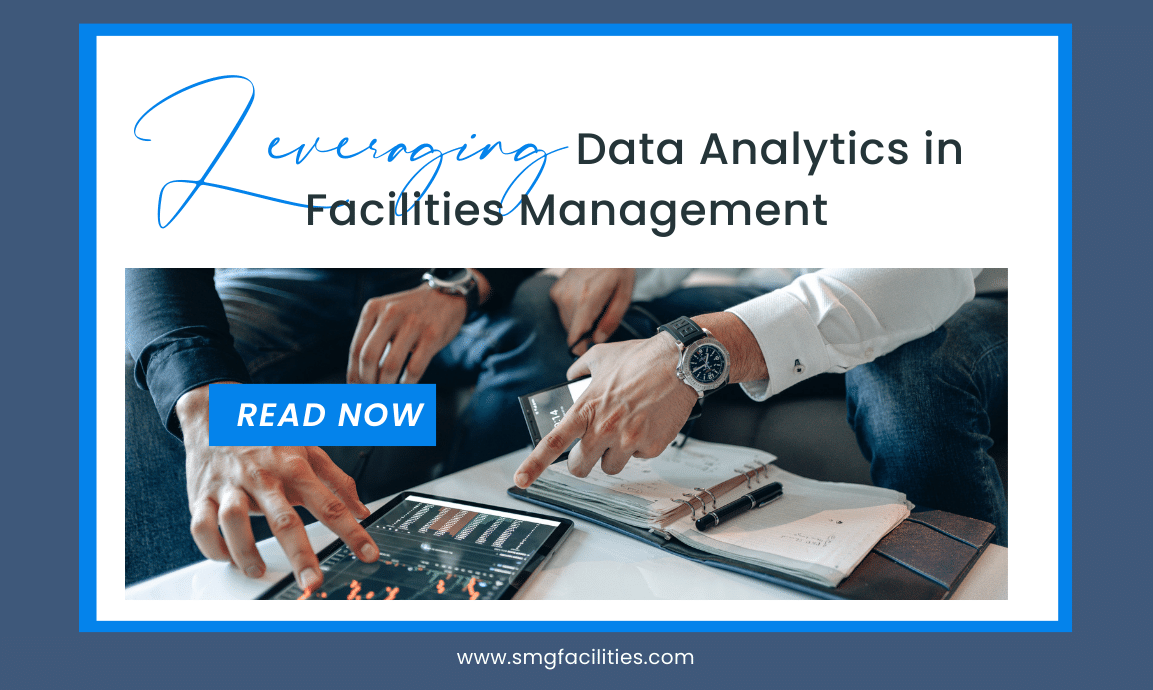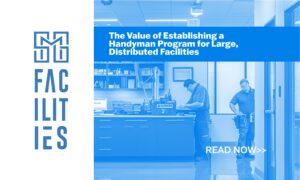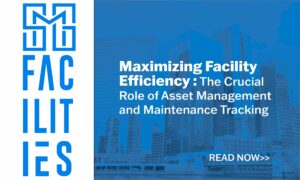If you were to analyze the advancements of data analytics in facilities management over the past five years, you would likely come up with “prodigious” as the perfect word to describe the impact it has made. Data analytics is the process of using software to compile data sets that, in the context of facilities management, can be used to identify trends and draw conclusions that can help facility professionals and ancillary departments improve operations. Data analytics in facility management can also help predict what could be needed in the future to drive ongoing efficiences, mitigate risks and uncover cost savings..
This blog examines data analytics in facilities management, the benefits and challenges data analytics present — and a few real-world examples that show how facility professionals can leverage data analytics to improve facilities management.
Benefits of Data Analytics in Facilities Management
By using data analytics in facilities management, department leaders can use the raw data to unearth insights in several ways that can benefit the company. Here are some of the benefits that can come from data analytics:
Improved operational performance
The data analysis process starts with the raw numbers. Those numbers then need to be converted into an accessible and understandable form of “actionable” information that facility professionals can study to determine the following:
- How are we utilizing the facilities’ assets?
- What challenges do team members face in maintaining those assets?
- Are we wasting valuable resources?
- How can efficiency in the processes be improved?
The next step for facilities professionals is to turn those questions or anomalies into data-driven action. For example, identifying assets that continually fail or areas within the business where process bottlenecks occur and take informed steps to improve performance or positively affect efficiency and team member productivity.
The constant improvements within the overall business can be spurred on by leveraging data analytics in facilities management. As the technology, 3rd-party systems and software platforms improve, they will generate more data, more ways for that data to be processed, and more improved ways to break down what that data means. With more data, more correlations between those bits of information can be assimilated. All that can lead to more ways facilities professionals can see and act upon areas of concern.
Enhanced Guest experience
There is a simple way to look at how this affects the guest: If a facilities professionals uses data analytics to find and solve ways to make the company’s processes more efficient, that means the company saves time and money. In addition, using data, facility professionals can be proactive in mitigating risk at the facility level that could potentially damage a company’s brand image as well as put the guest’s safety at risk.
Another way to look at how data analytics can enhance the guest experience is through the company’s demonstrated understanding of its customers. Companies can find better ways to cater to their needs by collecting, managing, and evaluating consumer data. With all that data from multiple users across various platforms and demographics, it will be possible to see repeating patterns and themes that can help a company compile a customer persona. By knowing the customers better, marketers and customer support people can adjust their approaches to suit customers’ expectations.
Increased efficiency and cost savings
After making sure the facilities allow the product to be processed correctly, the next two likely concerns of a facilities professional are keeping the process efficient and finding ways to save money. Data analytics and facilities management go hand in hand as managers use reliable information to pinpoint areas of process inefficiency and cost-saving opportunities. This data-driven approach empowers facilities managers to make strategic decisions that boost efficiency and save costs rather than just submitting to random, across-the-board cuts or reactively chasing fires (i.e. repairs, maintenance, etc.)
Examples of How Data Analytics is Used in Facilities Management
Now that we have shared the general ways in which data analytics can be of service to facilities professionals, let’s see some specific examples of how analytics can drive action:
Monitoring Energy Usage
In addition to being one of the biggest expenditures of company money, energy usage can also be one of the main areas where facilities professionals can find savings. But tracking energy use should encompass more than just studying utility bills. Data analytics are needed to understand how much energy a facility(s) and their systems use. They can also provide insightful information about when and why energy is consumed. Without data analytics, it’s impossible to see the many places where energy and money can be saved through a host of solutions, including things such as motion-sensitive lights, smart sensors, etc.
Tracking Maintenance and Repair Activities
As with energy usage, the more you know about the condition of your facilities and equipment, the more you can accurately assess ways to improve the situation. For instance, a company can use smart sensors to gather data like equipment temperature, vibration, flow, moisture and pressure. You can analyze the data from those smart sensors to determine the equipment’s condition. From that, you can decide if the equipment requires immediate servicing or whether it can wait for a scheduled service call down the road. The data can’t indicate when the equipment will break down, but it can allow you to set up a less-costly preventive maintenance plan to save money in the long run.
Analyzing Team Member Productivity
Team member productivity is less talked about than the other areas that benefit from data analytics, but there are ways for facilities professionals to use it for improvement. Analytics can measure team member data for workforce planning, performance, and engagement. But it can also be used by management to help understand elements that affect and drive productivity — time management, technology usage, multitasking, collaboration, and more. Using these elements, you can derive insights that can help the company improve business outcomes and find combinations that will lead to more productive employees and teams.
Challenges of Data Analytics for Facilities Management
Like all things that can bring success and improvement to your company, there are some things that are drawbacks. Here are a few things to consider when dipping into the world of data analytics in facilities management.
High Cost of Implementation
Data analytics can be an extremely valuable — yet costly — tool. When businesses think about allocating money, they want to know how much the data solution will cost and what it can bring to the table. That last part is hard to quantify because much of the success of using data analytics comes down to the impact of the changes you make after assessing the data and implementing the improvements. Regarding the cost of data analytics, the expenditures are on the software, the number of data sources, and the hours of analysis and support. While there is no set dollar figure and the costs depend on the services and time allocated, the general consensus is that companies should set aside between 2% and 6% of their total budget for data analytics.
Difficulty in Gathering and Understanding Data
This is another factor that depends on the time spent and the ability of those analyzing the data. Companies can face the significant challenge of sorting through all the various data sets to derive valuable insights that produce actionable, data-backed decisions.
In addition to the high volume of data, there can be challenges such as collecting useful data and selecting the correct analytics tool in a world where those performing the tasks need more skills or knowledge of the data culture to uncover actionable insights. This is where a suitable data analytics tool, the training of employees, and an environment that allows for learning are essential to making data analytics an instrument to proliferating your company’s success.
Potential for Data Breaches
When the volume of stored data increases, so does the challenge of keeping all that data secured. A company that adds data analytics should step up the measures to protect that data and minimize the risks of potential attacks as much as possible. Facilities managers looking to mitigate those risks can take some precautions, including:
- Controlling access rights.
- Encrypting data with secured login credentials.
- Conducting training on how to handle big data.
Hiring a professional cybersecurity company is also another option to assist in monitoring your systems.
SMG Facilities Can Help Take Your Data to the Next Level
Data analytics in facilities management can certainly be crucial to your company’s blueprint for a brighter future. With data analytics, a company can visualize where there are areas to improve operations on multiple levels and also find ways to predict what their next moves will be. Energy usage, maintenance issues, employee productivity, and even customer satisfaction can all be positively affected by data analytics. SMG Facilities, which has been providing exceptional service to multi-site clients since 1996, can either take complete control of your facilities management process or join forces with your existing facilities team to reach new heights. The choice is yours, but it all starts with a conversation. Contact us today!





